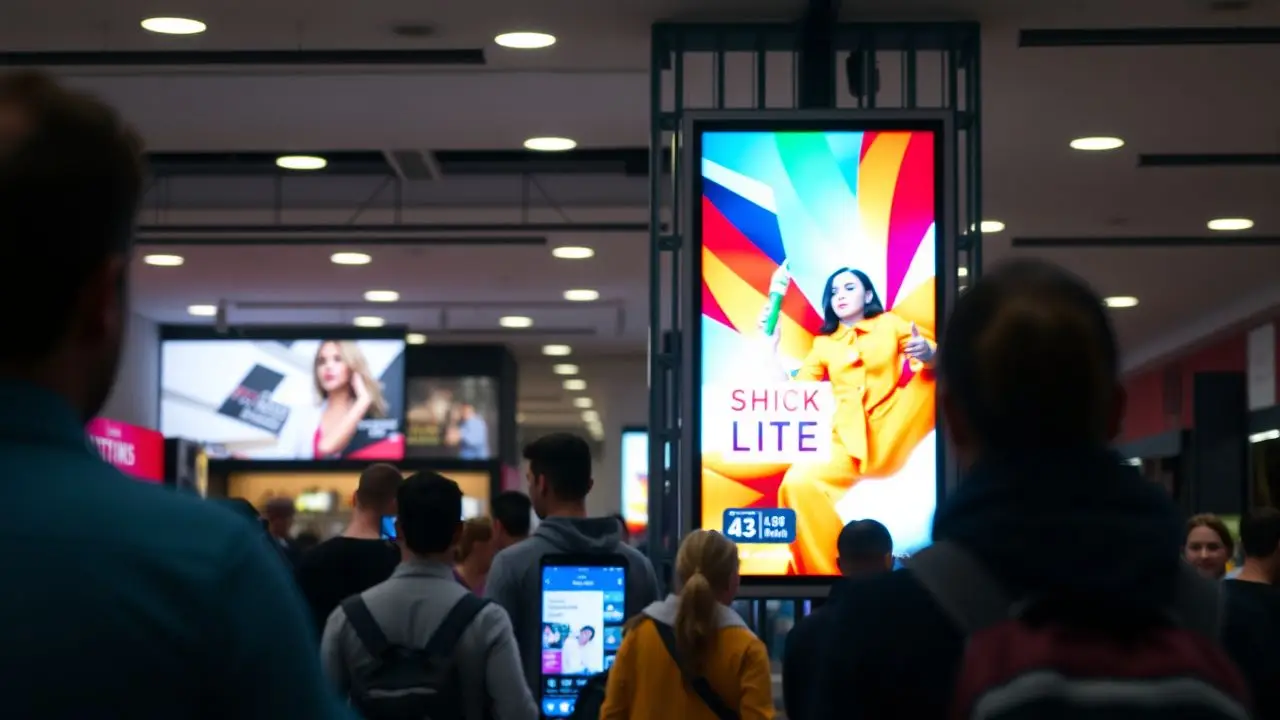Many stores struggle to catch customer attention. A fact is, digital signage boosts store performance. This blog will show how it changes the game for brick-and-mortar retail. Keep reading to see why.
Key Takeaways
- Digital signage helps stores make more money and create better shopping experiences. It shows ads and information that customers like.
- Stores can use screens to share sales or about new items quickly. This makes it easier for people to find what they want.
- Tools like kiosks and video walls make shopping faster and less confusing. They also help staff do their jobs better by giving out info on deals.
- Putting up digital signs means stores can change their messages anytime, keeping up with what customers want right now.
- Good planning is key for using digital signs well. Stores should know what they aim to achieve and keep updating their content to stay interesting.
The Power of Digital Signage in Retail
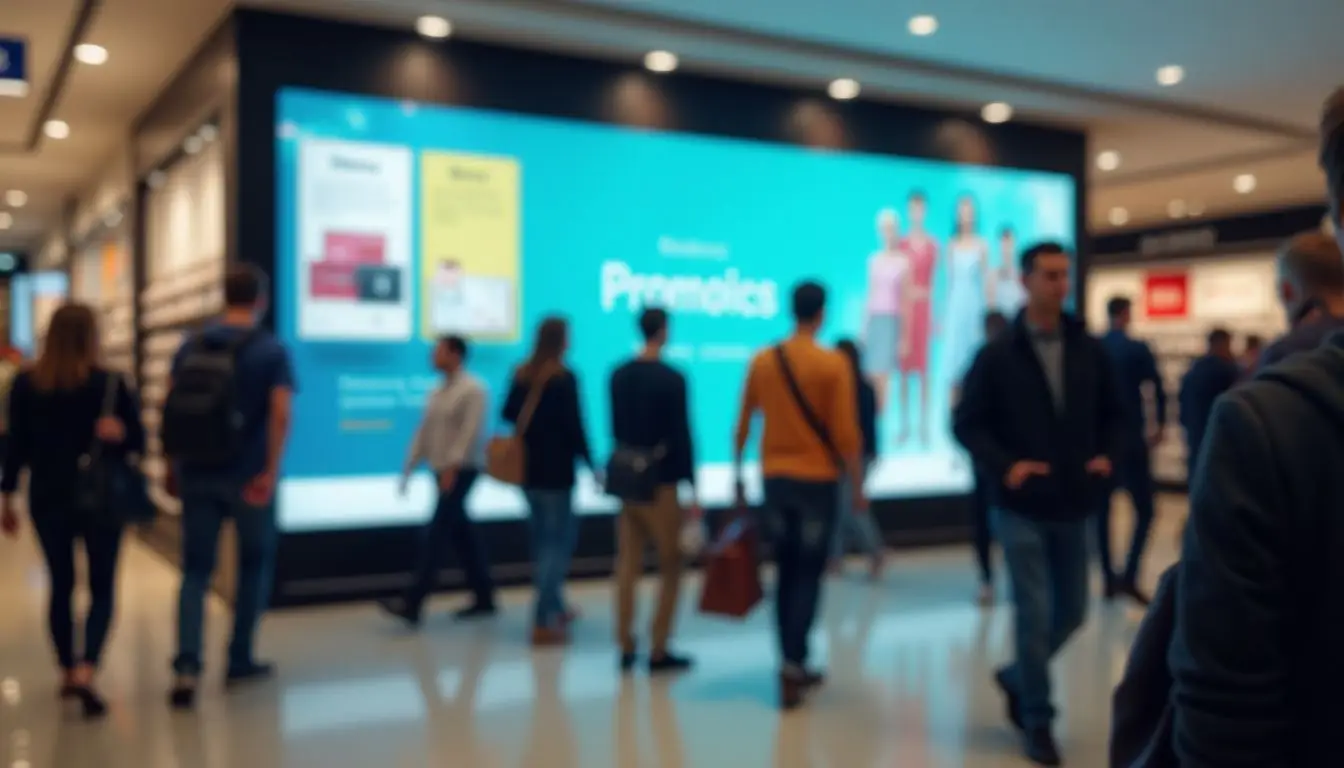
Digital signage transforms retail spaces. It draws in customers and boosts sales with engaging displays that catch attention.
Boosting ROI for Small Businesses
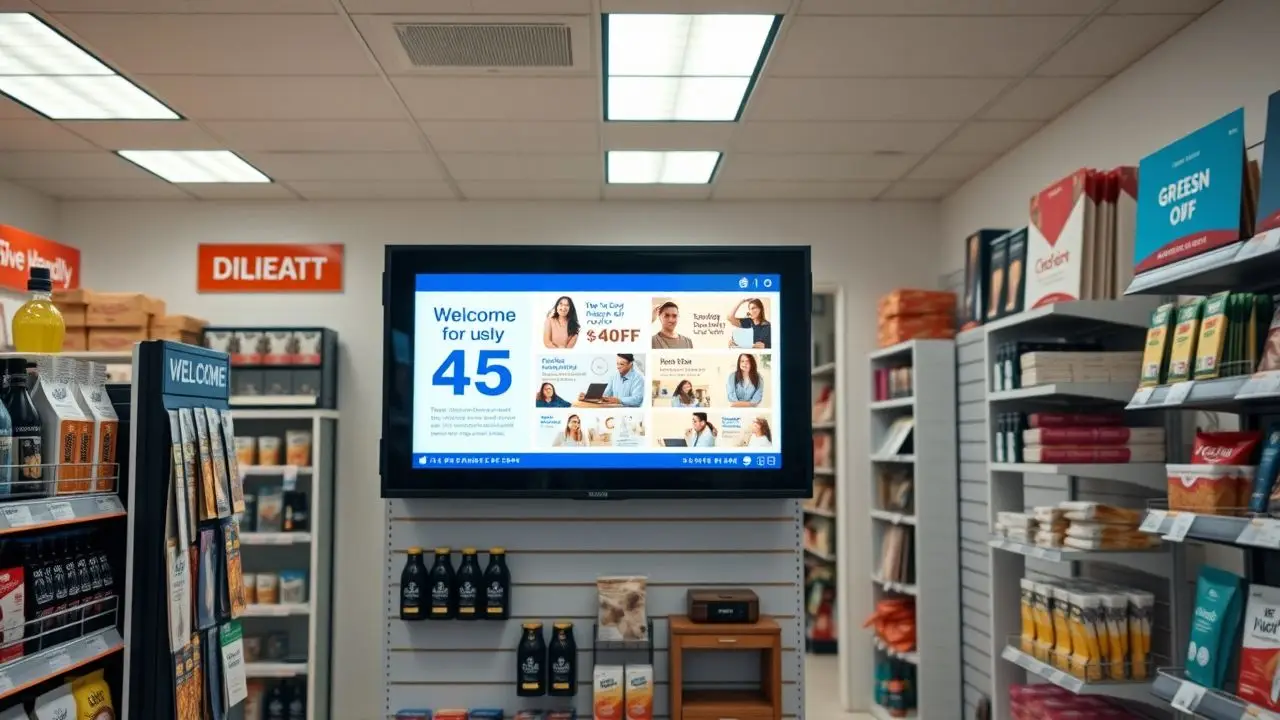
Digital signage can help small businesses earn more money. It grabs attention quickly. Customers see promotions and products right away. This leads to increased sales and better customer engagement.
First-hand experience shows that small retail stores using digital displays often see a rise in return on investment (ROI). These signs make it easy to share real-time updates about products or offers.
This means shoppers find what they want faster. Easy access to information helps them decide quickly, leading to more purchases.
Driving Sales with Personalized Experiences

Personalized experiences drive sales in retail. Customers respond well when they feel special. Digital signage helps create these moments. It shows tailored messages and offers based on customer interests.
This approach increases engagement and encourages purchases. For example, a clothing store can display discounts on items that match what a customer looked at before.
Using retail digital displays boosts product discovery too. Shoppers find new items through targeted ads on screens around the store. They see what’s popular or trending right now.
Interactive retail screens allow customers to get information about products quickly. This makes shopping easier and more enjoyable for everyone involved in the dynamic retail environment.
Advantages of Digitizing Retail Experiences

Digital tools make shopping easier for customers. They support quick service and help build strong loyalty programs.
Self-service Capabilities for Faster Transactions
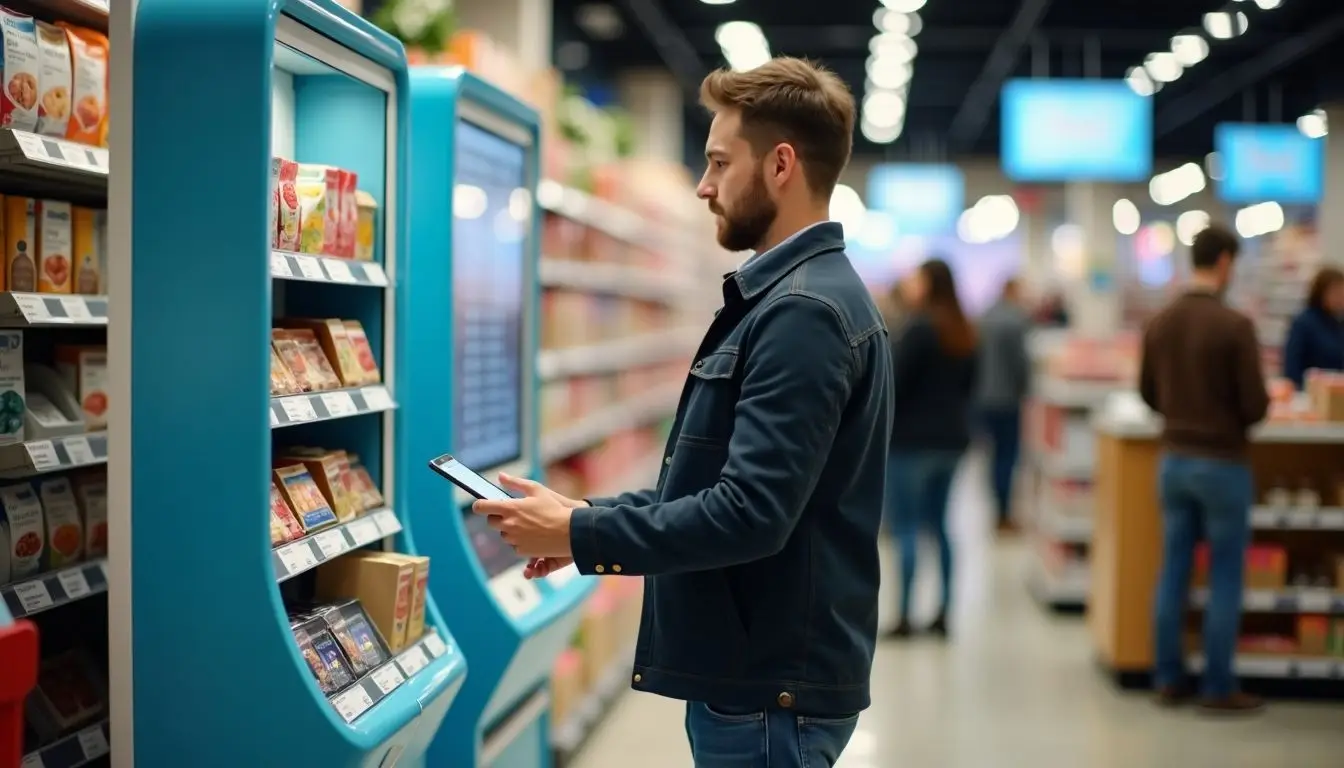
Self-service options make shopping easier. Customers can check out without waiting in long lines. They scan items and pay at kiosks or smart displays. This speeds up transactions in stores.
Small businesses benefit from self-service technology, too. It cuts down on labor costs and keeps customers happy. Shoppers like fast service and quick help with product locations.
Self-service gives them control over their experience, boosting retail sales optimization technology effectively.
Lucrative Loyalty Programs
Loyalty programs can boost customer engagement at retail stores. These programs reward customers for their purchases. They often offer points, discounts, or special offers. Many shoppers enjoy the chance to earn rewards.
Digital signage helps promote these loyalty deals in real time. It informs customers about how many points they have and what rewards are available. This keeps customers interested and encourages them to shop more often.
Offering exclusive deals through digital channels can greatly improve a store’s sales and customer satisfaction.
Fast Adaptation to Customer and Market Needs
Adapting quickly to customer and market needs is vital for retail success. Digital signage makes this easier. Stores can change messages or offers in real-time. This helps attract customers with relevant promotions.
For instance, a small business might highlight new products based on current trends. Customers appreciate fresh information that meets their changing preferences.
Using digital displays allows retailers to respond fast to market shifts. They can show seasonal items or adjust prices instantly. Staff also benefit from quick updates through screens.
These changes increase operational efficiency and improve the shopping experience. With effective digital advertising, stores stay competitive in a dynamic environment where customer engagement technology drives sales.
The Digital Future of Retail
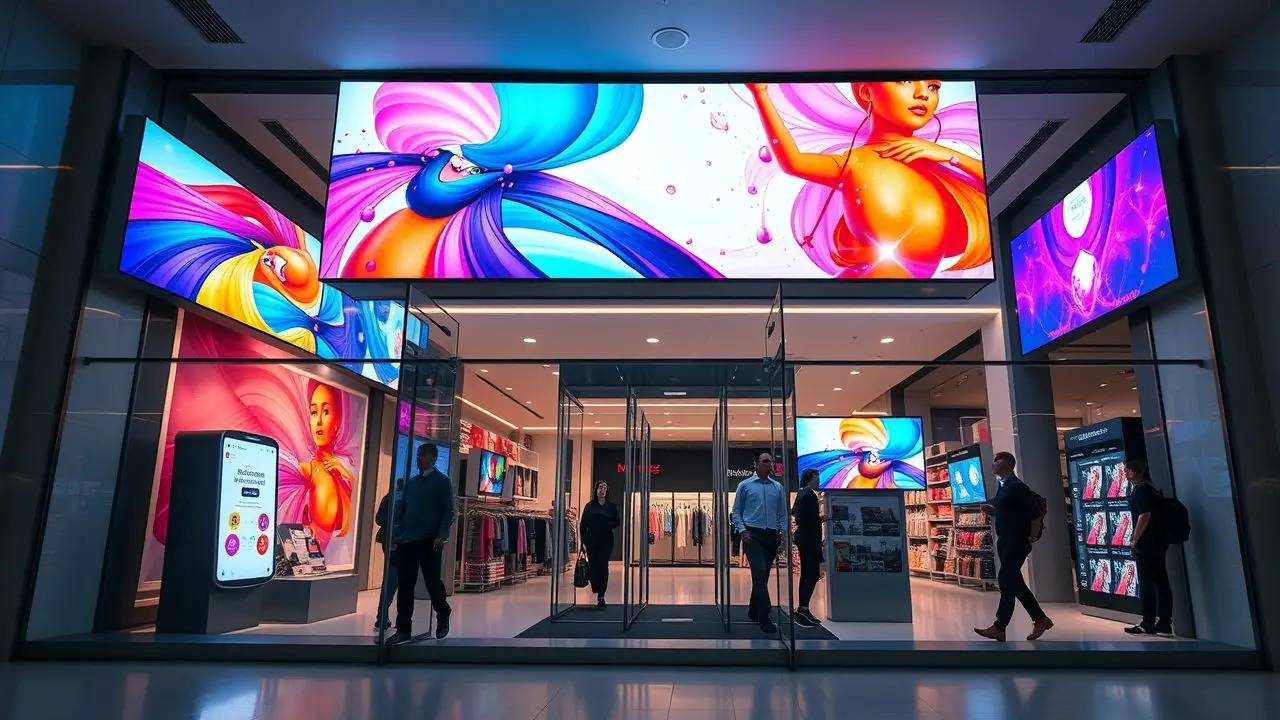
The digital future of retail is bright. Stores will use new tools like interactive displays and video walls to engage customers more.
Exploring Interactive Displays and Wayfinding Signage
Digital signage is changing how stores interact with customers. Interactive displays and wayfinding signage play a big role in this shift.
- Interactive displays engage customers by allowing them to touch screens for information. Shoppers can browse products or learn about promotions right at their fingertips.
- These displays enhance the customer experience. Customers enjoy more control over their shopping journey, leading to increased satisfaction.
- Wayfinding signage helps customers find their way around the store easily. It directs shoppers to different departments or special offers without confusion.
- Clear maps and directions reduce frustration for visitors. This helps create a pleasant shopping environment and encourages longer visits.
- Retailers can update these signs in real-time with new information or sales. Instant updates keep content fresh and relevant for all store visitors.
- For small businesses, investing in interactive displays can boost foot traffic and sales. Customers are drawn to innovative technology and engaging experiences.
First-hand experience shows that combining these tools improves overall customer interaction in stores significantly.
Utilizing Video Walls and Kiosks
Video walls and kiosks change how stores engage with customers. They provide new ways to share information and boost sales.
- Video walls grab attention with bright, large images. Stores can use them for promotions or to show products in action. Customers see what’s on sale easily.
- Kiosks let customers find information quickly. Shoppers can check prices or locate items in the store. This self-service option speeds up their shopping experience.
- Using video walls can create a lively atmosphere in retail spaces. They offer eye-catching displays that draw people in. This helps small businesses stand out from competitors.
- Kiosks improve efficiency at checkout points. Customers can make purchases without waiting in long lines. Faster transactions lead to happier shoppers.
- Installing these solutions is part of smart retail solutions. Both video walls and kiosks offer real-time updates on sales and promotions. This keeps shoppers informed about current offers.
- These tools support omnichannel marketing efforts, blending online and offline experiences seamlessly. Stores showcase online deals or app promotions through video displays for added engagement.
- Staff benefits from these systems too, as they allow them more time to assist customers instead of handling routine inquiries. Kiosks reduce pressure during busy times, making work less stressful for employees.
- Businesses gain valuable insights from interactions at kiosks or views on video walls. Data collected can help improve future marketing strategies and better target customer needs.
Benefits of Digital Signage for Staff and Customers
Digital signage brings many benefits for both staff and customers. Staff can communicate important updates in real time. This helps them stay informed about promotions or changes in the store quickly.
It also allows easy access to retail store information systems, making operations smoother. Customers enjoy personalized experiences through engaging displays. These screens show ads that match their interests, encouraging them to buy more.
Interactive digital signs offer guidance to shoppers as they navigate large stores. Kiosks provide instant product info and help with finding items easily. Video walls capture attention and make the shopping space lively.
Loyalty programs displayed on these signs motivate customers to return often for rewards. Staff can manage content effortlessly, ensuring messages are fresh and relevant for all visitors.
Best Practices for Implementing Digital Signage in Stores

Focus on clear goals for your digital signage. Create strong content that speaks to your customers. Use bright images and easy-to-read messages. Set a schedule for updates to keep things fresh.
Check how well it works and make changes when needed. Want to know more tips? Keep reading!
Setting Clear Objectives
Setting clear objectives is vital for using digital signage effectively. Start by defining what you want to achieve. This can include boosting sales or improving customer engagement.
Clear goals help guide your strategy and shape your content.
Having specific targets also allows you to measure success. You can track results through the use of real-time updates and analytics. Small businesses that set strong objectives often see better returns on their investment in retail digital marketing.
Adjustments can be made quickly when you know what outcomes you seek, making it easier to adapt your approach for optimal results.
Developing a Strong Content Strategy
A strong content strategy is key for effective digital signage. Focus on what customers want to see and know. Use clear messages that grab attention. Update your content regularly with real-time retail updates.
This keeps information fresh and relevant.
Visuals play a big role in attracting shoppers. Use eye-catching images and videos to highlight products or promotions. Create special offers for loyal customers through digital displays.
A good mix of content can boost engagement and sales in your store.
Using Compelling Visuals and Messaging
Compelling visuals and messaging are key for effective digital signage. Bright colors, clear fonts, and engaging images grab attention quickly. Short messages work best. They convey important information fast.
Retail technology allows businesses to showcase products in big ways.
Small business digital signage can create a strong impact. For example, using point-of-sale displays with vivid graphics can boost sales at checkout. Real-time updates keep customers informed about deals or events.
Staff also benefit from better messages that guide them and help improve customer service. Engaging content creates memorable experiences in brick-and-mortar retail spaces.
Creating a Content Schedule and Rotation Strategy
Creating a content schedule helps keep digital signage fresh and engaging. Plan ahead for what to show each week or month. Rotate your messages to fit seasons, special events, or sales promotions.
This keeps customers interested and informed about instore marketing.
A good rotation strategy also ensures that you highlight key products at the right time. For small businesses, this can boost point of sale displays and drive sales. With real-time updates, you can quickly change content based on customer trends or feedback.
This approach makes your messaging more effective in attracting shoppers and enhancing their retail experience.
Evaluating and Adapting for Optimal Results
Evaluating and adapting your digital signage helps ensure it works well. Review data on customer interactions with your screens. Look for patterns in sales and engagement. These insights can help make better decisions.
Change content often to keep it fresh. Use realtime updates to show new products or deals. Test different visuals and messages to see what customers like best. This approach boosts small business digital signage effectiveness and enhances the shopping experience.
Conclusion

Digital signage can change the game for brick-and-mortar stores. It attracts customers and boosts sales. Fast updates keep shoppers informed. Simple displays make shopping easier and more fun.
Retailers that use digital tools can thrive in today’s market.
FAQs
1. What is digital signage in brick-and-mortar retail?
Digital signage in brick-and-mortar retail refers to the use of electronic displays, like LCD or LED screens, used instore to show advertising and other messages.
2. Why is digital signage a game-changer for traditional stores?
Digital signage changes the game for traditional stores by providing realtime retail updates and enhancing customer experience through interactive content.
3. How does digital signage contribute to retail innovation?
Instore digital signage contributes to retail innovation by offering dynamic content that can be easily updated based on current promotions, stock levels or customer behavior patterns.
4. Can I update my store’s digital signs in real time?
Yes, one of the main benefits of using instore digital signs is that they can provide realtime updates about products, sales and more which helps improve overall shopping experience.
